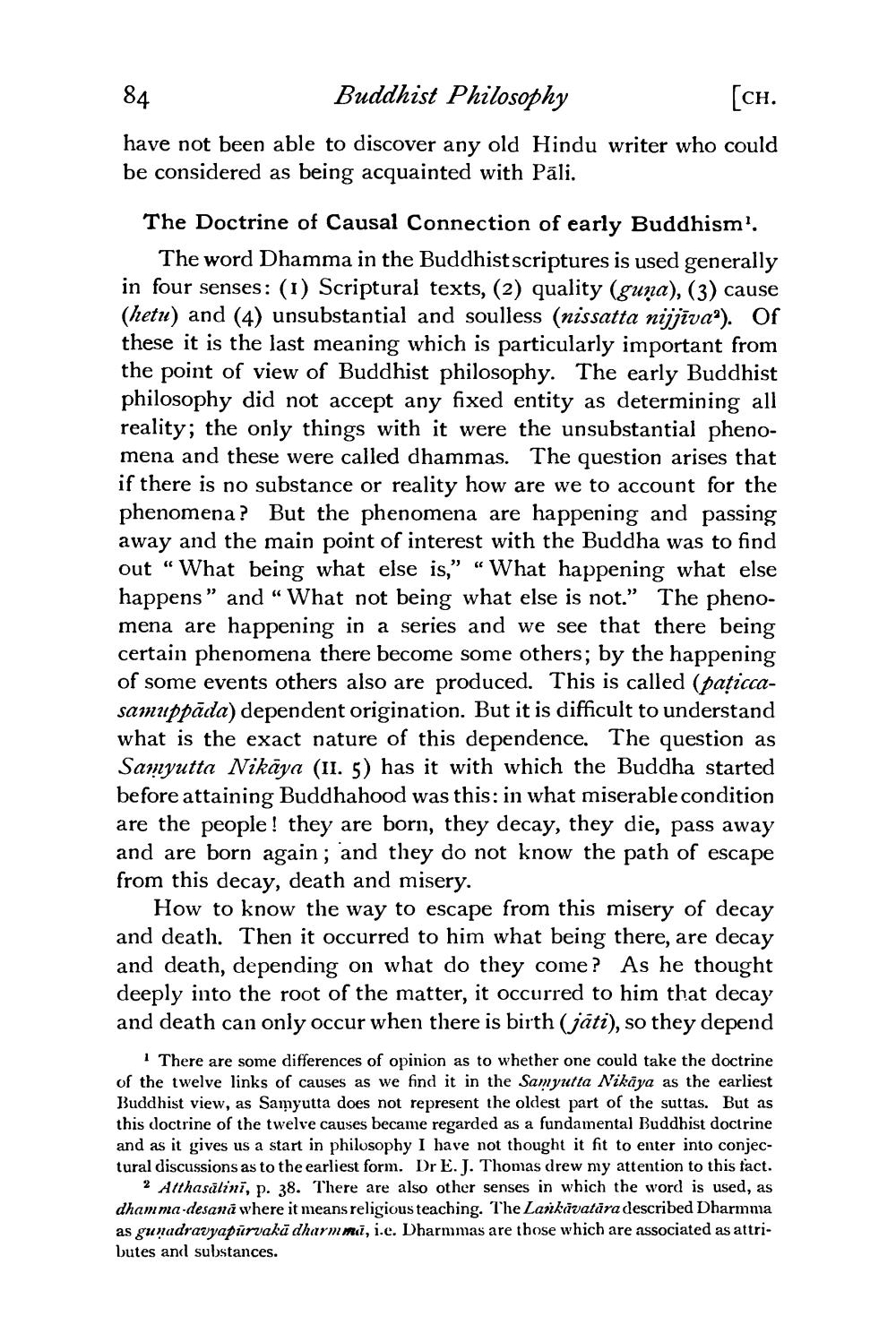________________
84
Buddhist Philosophy
[CH.
have not been able to discover any old Hindu writer who could be considered as being acquainted with Pāli.
The Doctrine of Causal Connection of early Buddhism'.
The word Dhamma in the Buddhist scriptures is used generally in four senses: (1) Scriptural texts, (2) quality (guna), (3) cause (hetu) and (4) unsubstantial and soulless (nissatta nijjiva). Of these it is the last meaning which is particularly important from the point of view of Buddhist philosophy. The early Buddhist philosophy did not accept any fixed entity as determining all reality; the only things with it were the unsubstantial phenomena and these were called dhammas. The question arises that if there is no substance or reality how are we to account for the phenomena? But the phenomena are happening and passing away and the main point of interest with the Buddha was to find out "What being what else is," "What happening what else happens" and "What not being what else is not." The phenomena are happening in a series and we see that there being certain phenomena there become some others; by the happening of some events others also are produced. This is called (pațiccasamuppada) dependent origination. But it is difficult to understand what is the exact nature of this dependence. The question as Samyutta Nikaya (II. 5) has it with which the Buddha started before attaining Buddhahood was this: in what miserable condition are the people! they are born, they decay, they die, pass away and are born again; and they do not know the path of escape from this decay, death and misery.
How to know the way to escape from this misery of decay and death. Then it occurred to him what being there, are decay and death, depending on what do they come? As he thought deeply into the root of the matter, it occurred to him that decay and death can only occur when there is birth (jāti), so they depend
1 There are some differences of opinion as to whether one could take the doctrine of the twelve links of causes as we find it in the Samyutta Nikaya as the earliest Buddhist view, as Samyutta does not represent the oldest part of the suttas. But as this doctrine of the twelve causes became regarded as a fundamental Buddhist doctrine and as it gives us a start in philosophy I have not thought it fit to enter into conjectural discussions as to the earliest form. Dr E. J. Thomas drew my attention to this fact.
2 Atthasalini, p. 38. There are also other senses in which the word is used, as dhamma-desana where it means religious teaching. The Lankavatāra described Dharmma as gunadravyapurvaka dharmma, i.c. Dharmmas are those which are associated as attributes and substances.




